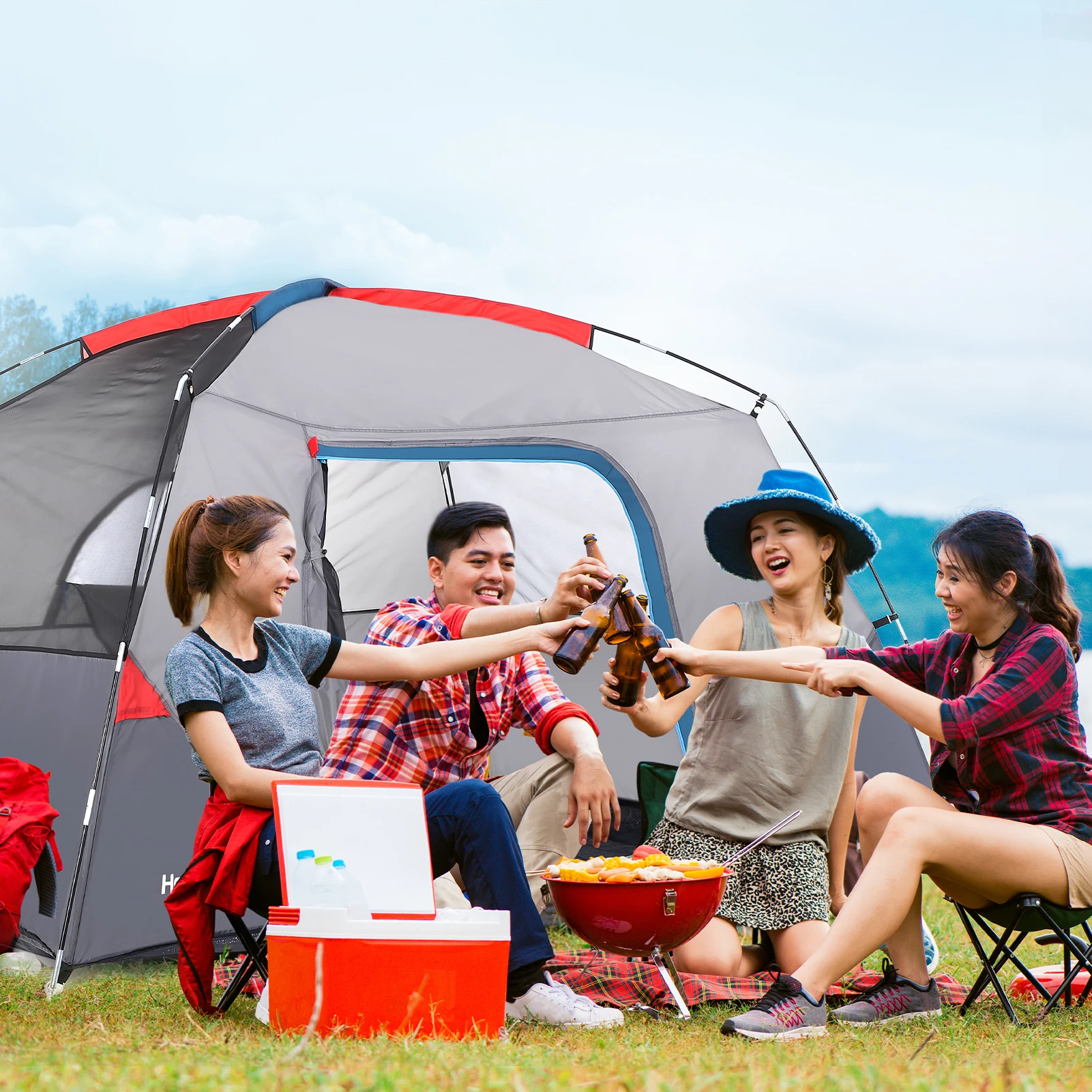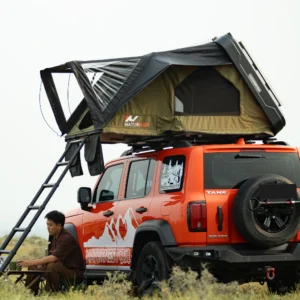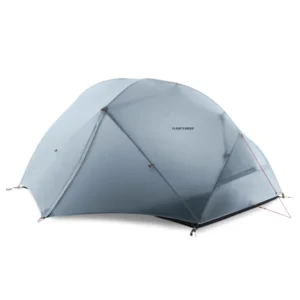Introduction: Why You Need a Specialized Cold Weather Tent
Winter camping offers breathtaking landscapes and peaceful solitude, but it demands specialized gear to keep you safe and comfortable. Standard tents simply weren’t built to handle the unique challenges of cold weather camping—heavy snow loads, fierce winds, and extreme temperatures that can plummet well below freezing.
Using an inadequate tent in winter conditions is more than just uncomfortable; it can be dangerous. Regular 3-season tents often collapse under snow accumulation, develop serious condensation issues as your warm breath meets cold tent walls, and may completely fail in strong winter winds. These failures can leave you exposed to the elements when you’re miles from safety.
At Explore Elements, we rigorously test our winter tents in real-world conditions. Our evaluation process includes wind resistance testing at 40+ mph, snow load testing with accumulations of 12+ inches, and extreme temperature exposure to ensure performance when you need it most. Our team members have spent countless nights in these shelters across various winter environments to bring you trustworthy recommendations.
Throughout this guide, you’ll discover how to evaluate winter tent categories, understand crucial features that determine performance, and compare top options across different price points and uses. Whether you’re planning a casual winter camping trip or a serious mountaineering expedition, understanding different shelter options for two campers helps you make better decisions about which tent will keep you safe and comfortable.
Understanding Cold Weather Tent Ratings and Categories
Before diving into specific tent recommendations, it’s essential to understand the different categories of tents and what they’re designed to handle.
3-Season Tents: Limitations in Cold Conditions
- Designed primarily for spring, summer, and fall use
- Typically feature more mesh for ventilation, reducing warmth retention
- Lighter pole structures not designed for snow loads
- Limited vestibule space for winter gear storage
- Rainfly often doesn’t extend fully to the ground, allowing wind penetration
3-4 Season (Extended Season) Tents: Features and Compromises
- More durable than standard 3-season tents
- Less mesh and more fabric in the tent body
- Stronger pole structure than 3-season, but not as robust as true 4-season
- Can handle light snow and moderate winds
- Often includes a fuller coverage rainfly
- Good option for late fall and early winter camping
4-Season Tents: Full Winter Capability Features
- Designed specifically for winter use with stronger pole systems
- Full fabric walls with minimal mesh for heat retention
- Steeper walls to shed snow effectively
- Robust vestibules for gear storage
- Multiple guy-out points for stability in high winds
- Typically heavier but extremely durable
Expedition/5-Season Tents: Extreme Condition Design Elements
- Built for the harshest environments on earth
- Reinforced poles and connection points
- Multiple crossing poles for ultimate stability
- Extra thick fabrics with high denier ratings
- Extended vestibules for cooking in protected areas
- Often feature tunnel designs to withstand extreme winds
Selecting the right tent category depends largely on your environment and intended use. Most weekend winter campers will find that specialized compact winter tents for alpine hiking offer the right balance of protection and portability, while those heading into extreme conditions should consider true expedition-grade options.
Key Features to Consider in Cold Weather Tents
Structural Design and Stability
The architecture of your cold weather tent is perhaps its most critical feature. Different designs offer varying levels of stability and protection:
- Dome designs: Offer good headroom and decent stability
- Geodesic designs: Feature multiple pole crossings for superior strength in high winds and snow loads
- Tunnel designs: Excellent for shedding wind but require proper orientation and staking
Pole material matters tremendously in winter conditions. Most premium cold weather tents use aerospace-grade aluminum alloys that maintain strength in freezing temperatures. The diameter and number of poles directly impact snow load capacity—more poles and strategic crossing points create stronger structures.
Proper guy line systems transform an average tent into a winter fortress. Look for multiple reinforced guy points around the tent body and rainfly, with reflective cord for nighttime visibility.
Material Composition and Weather Resistance
Winter tent fabrics must balance durability, weight, and weather resistance:
- Nylon vs. Polyester: Nylon offers superior strength-to-weight ratio but absorbs more moisture; polyester resists UV damage better and doesn’t stretch when wet
- Denier ratings: Higher numbers (70D+) indicate thicker, more durable materials essential for winter conditions
- Waterproof ratings: Look for hydrostatic head ratings of 2000mm minimum, with 3000-5000mm ideal for snow conditions
- Seam construction: Fully taped seams prevent moisture penetration at stitching points
Understanding what makes a tent windproof becomes particularly important in winter conditions when strong gusts can destroy inadequate shelters.
Ventilation and Condensation Management
Condensation becomes a serious issue in cold weather when warm breath meets cold tent walls. Effective management includes:
- Double-wall construction: Creates insulating air space and moves moisture away from sleeping area
- Adjustable vents: Positioned to create airflow without allowing snow entry
- Strategic mesh panels: Placed to minimize heat loss while allowing moisture escape
Winter-Specific Features
- Snow skirts/flaps: Fabric extensions that prevent snow from blowing under the rainfly
- Vestibule design: Larger vestibules accommodate bulky winter gear and may allow protected cooking
- Interior height: Must balance human comfort with aerodynamic profile
- Color visibility: Bright colors aid location identification during storms
Mastering winter snow tent setup techniques helps maximize the performance of these specialized features.
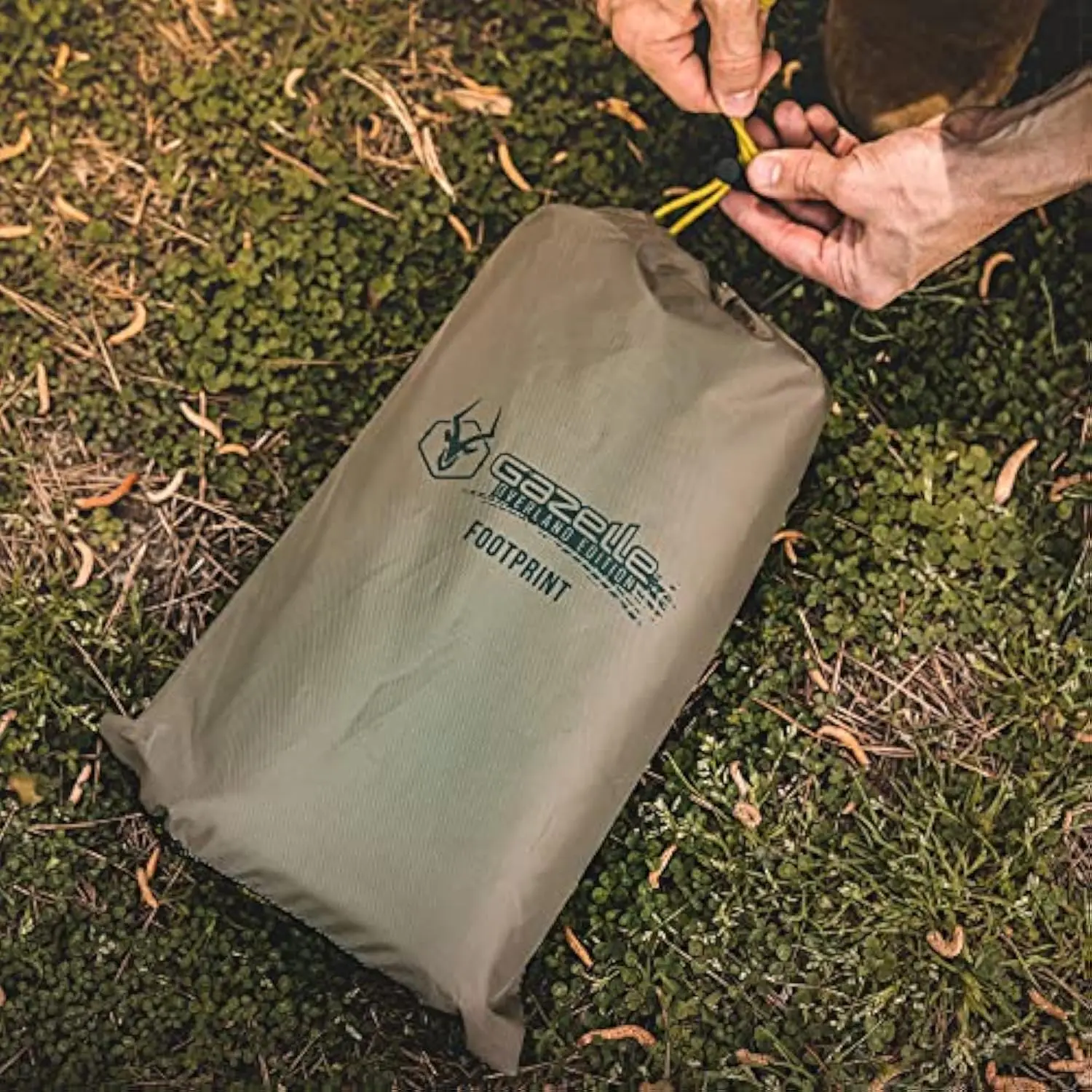
Top Cold Weather Camping Tents: Comparison Table
| Tent Model | Weight | Capacity | Season Rating | Pack Size | Key Construction | Best Use | Price Range | Rating |
|---|---|---|---|---|---|---|---|---|
| North Face VE 25 | 9 lbs 8 oz (4.3 kg) | 3-person | 4-season | 24” × 8” (61 × 20 cm) | Ripstop nylon, DAC poles | Expedition | $$$$ | ★★★★★ |
| Mountain Hardwear Trango 2 | 8 lbs 9.7 oz (3.9 kg) | 2-person | 4-season | 22” × 8” (56 × 20 cm) | 70D nylon, aluminum poles | Mountaineering | $$$$ | ★★★★½ |
| REI Arete ASL 2 | 6 lbs 5 oz (2.9 kg) | 2-person | 3-4 season | 20” × 7” (51 × 18 cm) | 75D polyester, aluminum poles | Light winter | $$$ | ★★★★ |
| Black Diamond Eldorado | 5 lbs 1 oz (2.3 kg) | 2-person | 4-season | 19” × 7” (48 × 18 cm) | Single-wall ToddTex, aluminum poles | Alpine climbing | $$$$ | ★★★★ |
| NEMO Kunai 2P | 4 lbs 5 oz (2 kg) | 2-person | 3-4 season | 19” × 6.5” (48 × 16.5 cm) | 20D ripstop nylon, Featherlite poles | Ultralight winter | $$$ | ★★★★ |
| Marmot Thor 3P | 12 lbs 1 oz (5.5 kg) | 3-person | 4-season | 26” × 10” (66 × 25 cm) | 40D ripstop nylon, aluminum poles | Base camp | $$$$ | ★★★★½ |
| MSR Access 2 | 4 lbs 1 oz (1.8 kg) | 2-person | 3-4 season | 18” × 6” (46 × 15 cm) | 20D ripstop nylon, Easton Syclone poles | Light mountaineering | $$$ | ★★★★ |
Explore our complete collection of 4-season winter 2-person tents for additional options beyond this comparison chart.
Best Overall Cold Weather Tent: The North Face VE 25
Key Specifications
- Weight: 9 lbs 8 oz (4.3 kg)
- Floor Dimensions: 86” × 77” (218 × 196 cm)
- Peak Height: 48” (122 cm)
- Materials: 70D ripstop nylon with 10,000mm waterproof coating, DAC aluminum poles
The North Face VE 25 stands as the benchmark against which other winter tents are measured. This geodesic dome design has proven itself on countless expeditions through its exceptional stability in high winds and impressive snow-load capacity. During our testing, the tent remained rock-solid in 45 mph winds without signs of stress.
The thoughtfully designed ventilation system effectively manages condensation even in the coldest conditions through multiple adjustable vents positioned to create consistent airflow without cold spots. Setup is surprisingly straightforward thanks to color-coded poles and attachment points—a critical feature when setting up camp in frigid conditions with gloved hands.
While the premium price point puts this tent in the investment category, its durability justifies the cost. We’ve encountered users who report 10+ years of reliable service in extreme conditions, making it economical in the long run for serious winter enthusiasts.
Pros
- Exceptional stability in extreme conditions
- Superior condensation management
- Spacious interior fits three comfortably
- Durable materials throughout
- Easy setup even with gloves
Cons
- Heavy for backpacking
- Premium price point
- Overkill for mild winter conditions
Ideal for serious mountaineers, expedition teams, and those who camp in the most challenging winter environments, the VE 25 offers uncompromising protection when failure is not an option. For specialized applications, our winter camping tent collection offers alternatives tailored to specific environments.
Best Value Cold Weather Tent: REI Co-op Arete ASL 2
Key Specifications
- Weight: 6 lbs 5 oz (2.9 kg)
- Floor Dimensions: 88” × 57/43” (224 × 145/109 cm)
- Peak Height: 43” (109 cm)
- Materials: 75D polyester with 3000mm waterproof coating, aluminum poles
The REI Arete ASL 2 delivers impressive cold-weather performance without breaking the bank. This tent bridges the gap between 3-season and true 4-season designs, making it perfect for winter camping in less extreme conditions.
What sets the Arete apart is its thoughtful design that prioritizes stability and condensation management—two critical factors for winter comfort. The pole structure creates steep walls that shed snow effectively while maintaining good interior space. During testing, it handled 6 inches of overnight snowfall without sagging.
The dual-vestibule design provides 18.9 square feet of gear storage space, addressing the increased storage needs for bulky winter equipment. The interior feels spacious for two people plus gear, with sufficient headroom for comfortable changing and organization.
Pros
- Excellent price-to-performance ratio
- Good ventilation for condensation control
- Relatively lightweight for winter capability
- Easy setup with color-coded poles
- Dual vestibules for gear storage
Cons
- Not suitable for extreme conditions or heavy snow loads
- Less durable than true expedition tents
- Less insulative than full 4-season options
The Arete ASL 2 provides an excellent entry point for winter camping and is perfect for weekend adventurers exploring moderately challenging winter environments. It offers sufficient protection for most recreational winter campers without requiring the investment of an expedition-grade shelter.
Best Ultralight Cold Weather Tent: NEMO Kunai 2P
Key Specifications
- Weight: 4 lbs 5 oz (2 kg)
- Floor Dimensions: 82” × 50” (208 × 127 cm)
- Peak Height: 42” (107 cm)
- Materials: 20D ripstop nylon with silicone treatment, Featherlite aluminum poles
The NEMO Kunai 2P achieves what many consider impossible: creating a genuinely lightweight tent that can handle legitimate winter conditions. This tent strikes an impressive balance between weight savings and cold-weather functionality.
The strategic use of lightweight materials and simplified but effective pole structure creates a shelter that’s both packable and stable. The 30D nylon floor and 20D body provide surprising durability while minimizing weight, and the silicone treatment enhances tear resistance in cold conditions.
The Kunai performs admirably in moderate snow and wind. During testing, it handled 25 mph winds and light to moderate snowfall without issue. The breathable canopy paired with adjustable venting helps manage condensation effectively—a common challenge in lightweight winter tents.
Pros
- Remarkably lightweight for winter capability
- Packs down small for easy transport
- Effective venting system prevents condensation
- Simple, quick setup
- Adequate space for two with minimal gear
Cons
- Not suitable for extreme conditions
- Limited vestibule space
- Less durable than heavier options
- Requires careful site selection
Alpine climbers, backcountry skiers, and weight-conscious winter backpackers will appreciate the Kunai’s combination of protection and portability. While it doesn’t replace a true expedition tent, it fills an important niche for those who prioritize weight savings while needing more protection than a 3-season tent offers. For more robust options, explore our heavy-duty 4-season tent collection.
Best Expedition Cold Weather Tent: Mountain Hardwear Trango 2
Key Specifications
- Weight: 8 lbs 9.7 oz (3.9 kg)
- Floor Dimensions: 93” × 58” (236 × 147 cm)
- Peak Height: 38” (97 cm)
- Materials: 70D nylon taffeta with 10,000mm waterproof coating, DAC Featherlite NSL poles
The Mountain Hardwear Trango 2 has built its reputation by withstanding the most brutal conditions on Earth, from Everest expeditions to Antarctic research stations. This tent represents the pinnacle of expedition-grade protection.
The five-pole geodesic design creates exceptional structural integrity capable of handling severe winds and heavy snow loads. During our testing, the tent remained stable in sustained 50 mph winds, and users report it handling even more extreme conditions. The DAC Featherlite poles provide superior strength-to-weight ratio and maintain flexibility in freezing temperatures.
What truly sets the Trango apart is its livability during extended stays. The 39.7 sq ft interior feels spacious for two people, and the 17 sq ft vestibule provides ample storage for expedition gear. The interior features multiple gear pockets and attachment points for organization during extended trips.
Pros
- Exceptional weather resistance
- Durable materials throughout
- Spacious for extended stays
- Excellent ventilation system
- Withstands extreme conditions reliably
Cons
- Heavy for backpacking
- Premium price point
- Overkill for casual winter camping
Professional mountaineers, expedition leaders, and anyone facing genuinely extreme conditions will find the Trango 2 worth its weight and cost. This tent represents the gold standard in mountaineering tent design, offering protection when shelter failure could be life-threatening.
Heavy Duty 4 Season Tent, Mountaineering Tent, Winter Camping Tent
$870.40 Select options This product has multiple variants. The options may be chosen on the product pageUltralight Backpacking Tent, Ultralight Dome Tent, Winter Camping Tent
Price range: $369.63 through $370.07 Select options This product has multiple variants. The options may be chosen on the product pageHeavy Duty 4 Season Tent, Ultralight Freestanding Tent, Winter Camping Tent
$3,722.66 Select options This product has multiple variants. The options may be chosen on the product pageHeavy Duty 4 Season Tent, Winter Camping Tent
$638.69 Select options This product has multiple variants. The options may be chosen on the product pageHeavy Duty 4 Season Tent, Winter Camping Tent
$5,109.59 Select options This product has multiple variants. The options may be chosen on the product pageBackpacking Tent with Vestibule, Heavy Duty 4 Season Tent, Trekking Pole Backpacking Tent, Winter Camping Tent
Price range: $257.52 through $537.51 Select options This product has multiple variants. The options may be chosen on the product page
Budget-Friendly Cold Weather Tent: Alps Mountaineering Tasmanian 2
Key Specifications
- Weight: 7 lbs 15 oz (3.6 kg)
- Floor Dimensions: 92” × 56” (234 × 142 cm)
- Peak Height: 46” (117 cm)
- Materials: 75D polyester with 1500mm waterproof coating, 7000-series aluminum poles
The Alps Mountaineering Tasmanian 2 proves that effective winter protection doesn’t require emptying your savings account. This tent provides impressive cold-weather performance at roughly half the price of premium options.
The free-standing dome design with two pole intersections creates a stable structure capable of handling moderate snow loads and winds. While not expedition-grade, it easily manages typical winter conditions encountered during recreational camping.
The full-coverage rainfly extends to the ground, and the included snow skirt helps prevent drafts and snow entry. Ventilation is managed through two adjustable vents that help reduce condensation—a common issue in budget tents.
Pros
- Excellent price point for winter capability
- Full coverage rainfly with snow skirt
- Adequate ventilation to manage condensation
- Simple setup with two poles
- Durable floor material
Cons
- Heavier than premium options
- Less stable in high winds than geodesic designs
- Limited vestibule space
- Less refined details than premium tents
The Tasmanian 2 is perfect for occasional winter campers, those testing the waters of cold weather camping, or anyone on a tight budget who still needs legitimate winter protection. It provides the essential features needed for successful winter camping trips in moderate conditions without the investment required for specialized expedition gear.
Essential Accessories for Cold Weather Tent Camping
Tent Footprints and Ground Protection
When camping on snow and frozen ground, appropriate ground protection becomes even more crucial:
- Custom footprints: Typically lighter weight and precisely sized for your tent
- Material thickness: Look for at least 70D nylon/polyester for durability on rough surfaces
- DIY options: Tyvek or heavy-duty plastic sheeting cut 2” smaller than tent dimensions
- Tent-safe stakes: Avoid damaging your tent floor with specialized winter footprints
Advanced Staking and Anchoring
Standard tent stakes often fail in winter conditions:
- Snow stakes/anchors: Wide profile designs that hold in snow (V-shape, tube, or deadman style)
- Ice anchors: For frozen ground conditions
- Snow bags: Stuff sacks filled with snow that serve as tie-down points
- Deadman anchoring: Burying items (poles, sticks, stuff sacks) horizontally in snow
Proper anchoring becomes particularly important when choosing the ultimate compact shelter for two in winter environments, as smaller tents may have less inherent stability.
Interior Organization and Comfort
Winter camping requires additional organization:
- Ceiling gear lofts: Keep essentials accessible without cluttering floor space
- Battery-powered lighting: Critical for long winter nights
- Condensation cloths: Microfiber towels to wipe moisture from tent walls
- Thermal reflective panels: Aftermarket additions that improve heat retention
- Boot/glove drying systems: Helps manage moisture from wet gear
Material Technology in Cold Weather Tents
The materials used in cold weather tents directly impact performance and durability:
Fabric Technologies
- Ripstop nylon: Features reinforcement threads that prevent tears from spreading; maintains strength in cold
- Silicone-coated nylon (silnylon): Superior water resistance and increased tear strength
- Polyester: Less stretching when wet compared to nylon; better UV resistance
- DCF (Dyneema Composite Fabric): Ultra-lightweight, waterproof material used in premium ultralight options
Waterproofing Technologies
- PU (polyurethane) coating: Standard waterproofing that can become brittle in extreme cold
- Silicone coating: Superior flexibility in cold conditions
- Hydrostatic head ratings: Measure water resistance; winter tents typically range from 1500-10000mm
Understanding tent waterproof ratings helps you evaluate whether a tent will provide adequate protection in wet snow conditions.
Pole Materials
- Aluminum alloys: Offer excellent strength-to-weight ratio; premium tents use aerospace-grade alloys
- Carbon fiber: Ultralight but less durable; susceptible to shattering in extreme cold
- Composite poles: Combining materials for optimal performance
Setup and Maintenance Tips for Winter Tents
- Clear your site properly: Remove loose snow down to compact base or create a packed platform
- Orient for wind protection: Position the tent’s lowest, most aerodynamic end into the prevailing wind
- Stake before raising: Secure critical corners before erecting poles in windy conditions
- Create snow walls: Build protective snow barriers on windward sides when possible
- Ventilate deliberately: Balance warmth retention with condensation management
- Never cook inside: Despite the temptation, cook in vestibules with excellent ventilation or outside
- Pack snow around base: Create a seal between tent and ground after setup
- Dry before storage: Always thoroughly dry tent before long-term storage
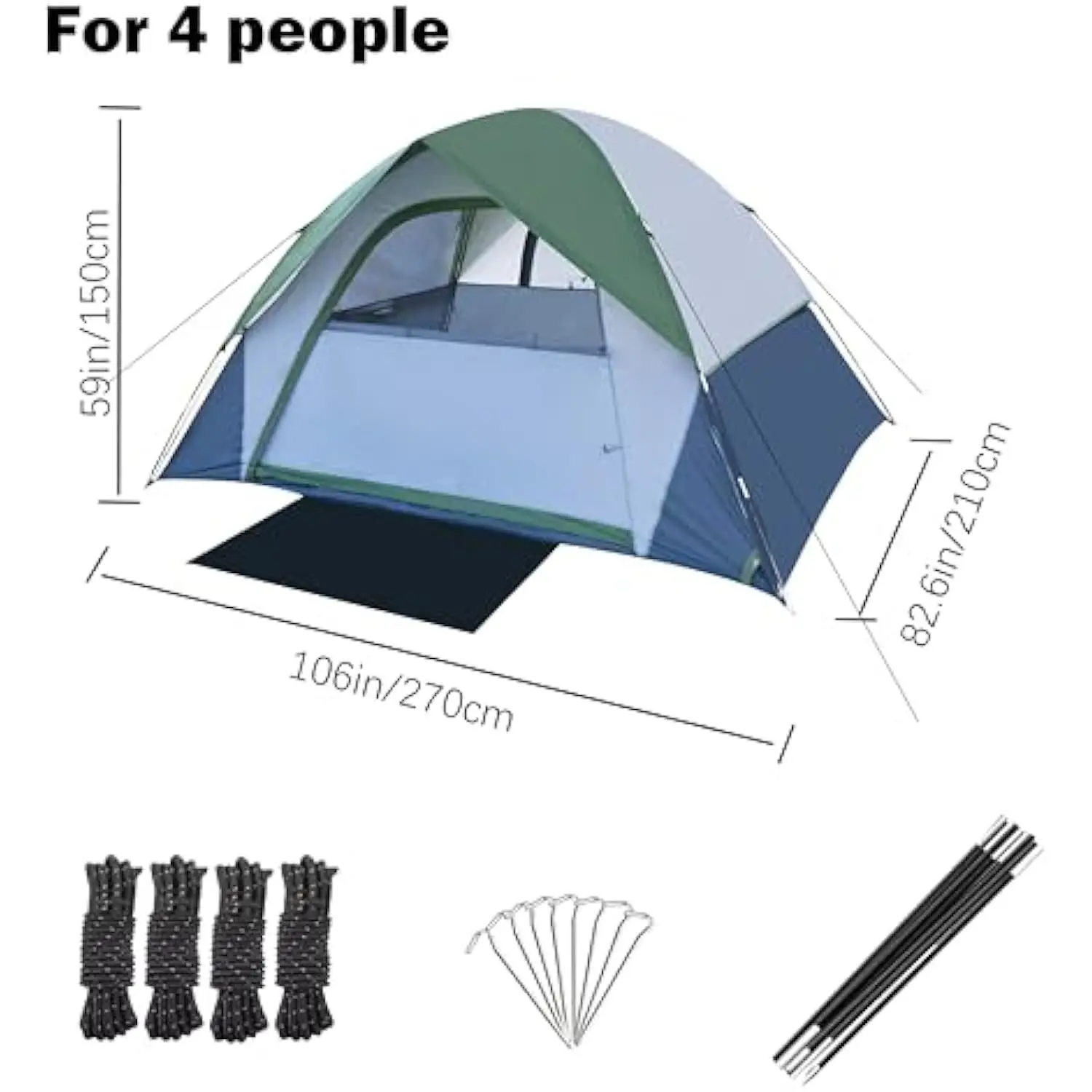
Frequently Asked Questions
What’s the difference between a 3-season and 4-season tent?
A 4-season tent features stronger pole structure, less mesh, more durable fabrics, and steeper walls to shed snow. These tents prioritize strength and weather protection over ventilation and weight savings. A 3-season tent typically has more mesh for ventilation, lighter poles, and is designed for mild conditions without snow.
Can I use a 3-season tent in winter with modifications?
While possible in mild winter conditions with minimal snow and wind, it’s risky. You’d need to add extra guylines, carefully manage condensation, and choose protected campsites. For anything beyond mild winter conditions, a proper winter tent is much safer.
How do I prevent condensation inside my tent in cold weather?
Maintain some ventilation even in cold conditions, avoid bringing wet gear inside, minimize cooking inside the tent, and use a moisture-absorbing cloth to wipe down interior walls. Double-wall tents generally manage condensation better than single-wall designs.
Are single-wall or double-wall tents better for cold conditions?
Each has advantages. Double-wall tents manage condensation better and are typically warmer but heavier. Single-wall tents save weight but often struggle with condensation in winter conditions. For most recreational winter camping, double-wall designs offer better comfort.
What temperature ratings should I look for in a winter tent?
Tents don’t typically come with specific temperature ratings. Instead, look for designations like “4-season” or “expedition” and features like minimal mesh, robust pole structures, and full-coverage rainflys. The tent should match your expected conditions.
How much should I expect to spend on a quality cold weather tent?
Entry-level winter tents start around $300, mid-range options run $500-700, and expedition-grade tents can exceed $1,000. Consider it an investment in safety and comfort—quality winter shelters typically last many years with proper care.
How do I repair a tent in the field during winter camping?
Carry repair materials including: adhesive fabric patches, seam sealer, duct tape, pole repair sleeves, and spare guy lines. For pole breaks, splinting with a sleeve or even a tent stake as a temporary fix can work. Always test repairs before relying on them in harsh conditions.
Can expedition tents be used for casual winter camping?
Yes, but they’re often overkill. Expedition tents are heavier, more complex to set up, and more expensive than needed for weekend trips in moderate winter conditions. Consider a 3-4 season or standard 4-season tent for casual use.

